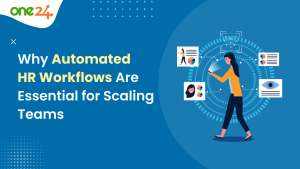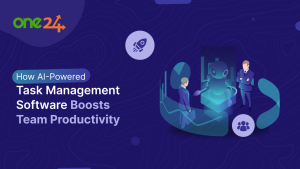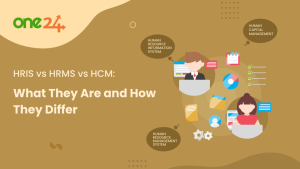To be competitive and accomplish targeted goals, businesses must maximize productivity. Systems for tracking employees have become effective instruments for keeping an eye on and maximizing worker productivity. There are several ways that trackers might increase output and foster success at work.
Learn the fundamentals of effective workforce management! Let’s explore the key components that characterize a successful employee tracking system in our most recent blog. Find the tools that boost output and simplify processes, from time management to performance analytics. Get ready to transform team management!

What is an Employee Tracking System?
Employee tracking systems, sometimes referred to as workforce management solutions or employee monitoring software, are electronic instruments used in the workplace to monitor and evaluate behavior, performance, and activities. These systems collect data and offer insights into worker productivity through a range of technologies, including computer monitoring, GPS tracking, time tracking, and productivity analytics. Majority of the IT organizations implement an employee tracking system as shown in the image below:

Features of Employee Tracking System
1. Time Tracking
Employees with time-tracking capabilities can log the hours they spend on different assignments or projects. Clocking in and out, keeping track of breaks, and classifying time entries according to projects, clients, or activities are usually included. Time tracking facilitates precise payroll processing, efficient resource allocation, and staff productivity monitoring for enterprises.

2. Attendance Management
The tracking of attendance includes not only the employees’ arrival and departure times but also any incidents of laziness or absence. Managers can use this functionality to quickly resolve attendance-related concerns, enforce standards, and identify patterns. Automated attendance management solutions give real-time visibility while reducing human administrative responsibilities.
3. Task and Project Management
Managers can create, allocate, and monitor tasks and projects inside the company with the help of this feature. Task assignment, deadline setting, task prioritization, and progress tracking are some of its features. This feature makes it easier to collaborate, increases accountability, and guarantees that projects are finished on schedule and under budget.
4. Computer Monitoring
Computer monitoring is keeping tabs on how much time employees spend on their computers, as well as the websites and apps they use. It supports businesses in locating productivity snags, keeping an eye on policy compliance, and spotting any security risks. Computer monitoring software helps businesses maximize workflow productivity and offers insights into workers’ behavior.
5. Productivity Analytics
It is the study of worker productivity using key performance indicators (KPIs) like time spent on activities, completion rate, and efficiency. It highlights opportunities for development, gives managers practical insights into labor productivity trends, and facilitates data-driven decision-making. Organizations can measure and optimize staff performance with productivity analytics technologies to meet corporate objectives.

6. Performance Monitoring
It is the process of keeping track of and assessing worker performance in relation to predetermined targets and goals. It involves evaluating the effectiveness, timeliness, and quality of the output. Managers can provide feedback, pinpoint areas in need of training, and identify high performers with performance monitoring systems. Organizations can promote continuous improvement and increase worker productivity by keeping an eye on performance measures.
7. Employee Scheduling
Managers may effectively set and oversee people’s schedules thanks to this functionality. It entails allocating shifts, controlling accessibility, and distributing the tasks evenly among the workforce. Utilizing this feature enables businesses to minimize scheduling conflicts, maximize personnel numbers, and guarantee sufficient coverage during busy or peak hours.
8. Remote Work Support
These features offer resources and tools to manage remote teams efficiently. It consists of platforms for collaboration, remote access to corporate systems, and virtual communication. The functionality makes sure that employees who work from distant locations have access to the resources and assistance they need to do their jobs well and maintain relationships with their teams and coworkers.

9. Compliance and Security
Features that guarantee adherence to industry rules and data security requirements are included in personnel tracking systems. To secure sensitive data and stop unwanted access, it has safeguards including audit trails, access limits, and encryption. Businesses can reduce risks associated with data privacy, confidentiality, and regulatory compliance by implementing compliance and security features.
10. Reporting and Analytics
Organizations can create customized reports and dashboards to show important metrics, patterns, and trends with the help of reporting and analytics features. It offers useful information about worker performance, compliance, and productivity. Tools for analytics and reporting provide data-driven strategic planning and decision-making, assisting businesses in achieving their goals and streamlining operations.
11. Integration Capabilities
These solutions can be easily integrated with other company systems, including payroll, HR, and project management software, thanks to integration features. It makes data exchange possible, optimizes workflows, and guarantees data consistency throughout the company. Integration possibilities boost overall corporate productivity and improve the efficacy of staff tracking systems.
12. Mobile Accessibility
Employees can use their smartphones or tablets to access the monitoring system from anywhere at any time thanks to mobile accessibility capabilities. Workers can use it to organize projects, track time, clock in and out, and stay in touch with coworkers while on the road. Flexibility, productivity, and teamwork are all improved by mobile accessibility for field-based and remote workers.
13. Customization Options
These let businesses modify the monitoring system to fit their own requirements and tastes. It has user interfaces, reports, workflows, and settings that are all customizable. Organizations can modify the tracking system to meet their needs, business procedures, and industry standards thanks to customization options.
14. Employee Feedback and Communication
Features that support feedback, coaching, and performance reviews enable managers and staff to communicate with one another. It has resources for setting up one-on-one sessions, gathering feedback, and administering surveys. Transparency, cooperation, and ongoing improvement within the company are encouraged by feedback and communication tools.
Wrapping Up
Choosing the appropriate employee monitoring system is critical for businesses looking to maximize worker output, improve operational effectiveness, and meet their goals. When assessing tracking systems, employers must consider a wide range of functionalities, all of which are well covered by the 14 essential elements listed in this blog. Every feature—from performance monitoring and mobile accessibility to time tracking and attendance management—is essential to enabling businesses to keep an eye on, manage, and develop the full potential of their staff.
Organizations may increase accountability, expedite workflow procedures, and promote a collaborative and productive culture among their teams by utilizing these capabilities. Furthermore, security and compliance features guarantee that these systems follow industry rules and shield private information from unauthorized access.
Confused? – Answers Coming Right Ahead!
1. What is an employee tracking system, and why is it important?
Digital tools like time tracking, attendance management, and performance monitoring are just a few of the activities that may be tracked and managed by employees using an employee tracking system. Ensuring productivity, compliance, and effective resource allocation are critical for enterprises.
2. What essential components should a system for tracking employees have?
List of features an employee tracking system must have:
- Time tracking
- Attendance management
- Task and project management
- Employee scheduling
- Productivity analytics
- Performance monitoring
- Compliance and security measures
- Reporting and analytics capabilities
- Integration options
- Mobile accessibility
- Customization options
- Tools for employee feedback and communication
3. How does labor productivity increase with the use of an employee tracking system?
By giving employers access to their workers’ activities, maximizing resource allocation, encouraging accountability, spotting inefficiencies, and supporting data-driven decision-making, employee monitoring systems increase productivity. Employee tracking systems help to increase overall efficiency by optimizing workflow procedures and guaranteeing adherence to corporate guidelines.
4. Can remote team management be aided by staff tracking systems?
Indeed, employee tracking solutions are perfect for managing remote teams since they have features like task management tools, virtual check-ins, remote access, and mobile accessibility. These technologies allow firms to successfully manage communication and collaboration among distant team members, track project progress, and monitor employee productivity.
5. In what ways do employee tracking systems encourage accountability and openness at work?
Employee monitoring systems facilitate accountability and transparency by giving workers access to task assignments, attendance records, and performance measures. By keeping an eye on workers’ actions, tracking their advancement, and giving immediate feedback, managers may promote an open, trustworthy, and accountable work environment.
6. How do analytics and reporting fit into personnel tracking systems?
Organizations can create customized reports and dashboards to show important data, trends, and patterns in worker productivity, performance, and activity with the help of reporting and analytics functions. These insights enable managers to pinpoint areas for development, make well-informed decisions, and successfully implement personnel management initiatives.
7. How can time theft and absenteeism be addressed with staff tracking systems?
Organizations may reliably track employee attendance, spot absence trends, and take proactive measures to deal with time theft issues by implementing employee tracking solutions. These systems assist companies in lowering absenteeism rates and minimizing productivity losses from time theft by keeping an eye on attendance trends, enforcing attendance standards, and putting corrective actions in place.





